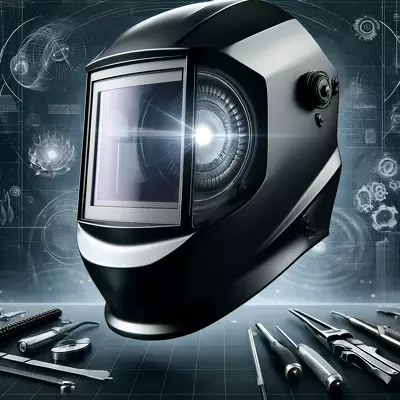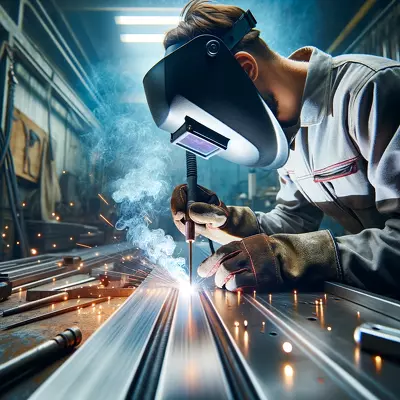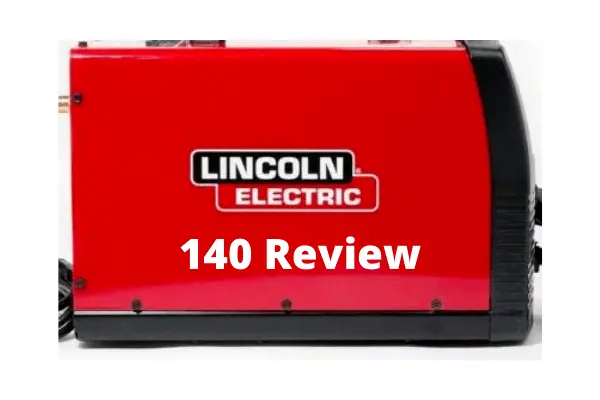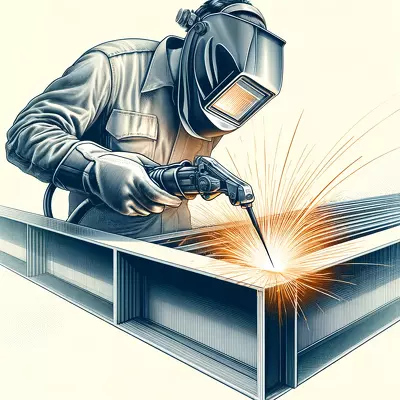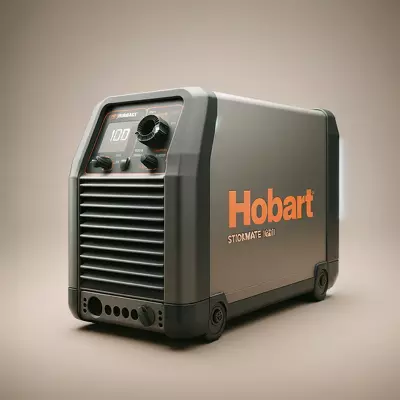Mastering Metalwork: Choosing the Best Welding Inverter Machine for Modern Fabrication
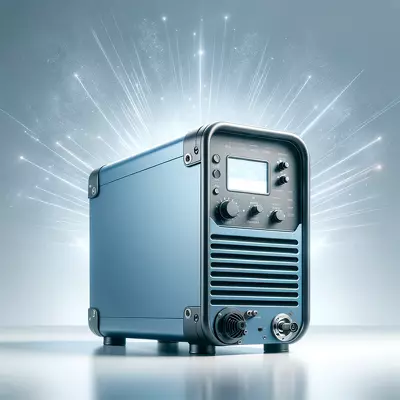
Welding is a crucial process in both industrial and DIY projects, requiring precision, durability, and versatility. The advent of inverter technology has revolutionized this field, offering machines that are lighter, more efficient, and capable of delivering cleaner, more controlled welds. These advancements have made it easier for professionals and hobbyists alike to achieve high-quality results across a variety of metals and applications, marking a significant leap forward in welding technology.
As an Amazon Associate, we earn a commission from qualifying purchases.
I. Introduction
A. Importance of Welding in Modern Fabrication
Welding stands as a cornerstone in the arena of modern fabrication, bridging gaps between metal pieces to create structures that are both strong and reliable. This process is pivotal in various industries, including automotive, construction, and manufacturing, where the integrity of metal joints is non-negotiable. The precision and durability afforded by advanced welding techniques ensure the longevity and safety of buildings, vehicles, and machinery, making welding an indispensable skill in the contemporary world of fabrication.
B. Evolution of Welding Machines: From Traditional to Inverter Technology
The journey of welding machines from their traditional forms to the sophisticated inverter-based models marks a significant evolution in welding technology. Traditional welding equipment, while effective, often needs to be improved in terms of size, energy consumption, and adaptability to different welding environments. The advent of inverter technology has addressed these challenges head-on, offering welders compact devices that do not compromise on power or efficiency and are versatile enough to handle a wide range of welding tasks.
C. Advantages of Using Inverter Welding Machines
Inverter welding machines bring a host of advantages to the table. These devices are celebrated for their lightweight design, energy efficiency, and superior control over the welding process. With the ability to modulate the welding current rapidly, inverter welders provide a stable arc, reduced spatter, and improved weld quality. Furthermore, their compatibility with both AC and DC power sources, along with the ability to perform under varying power inputs, makes them a flexible choice for welders working in different environments and on different materials.
II. Understanding Inverter Welding Machines
A. What is an Inverter Welding Machine?
An inverter welding machine is a revolutionary piece of equipment designed to enhance the welding process through the use of high-tech semiconductor technology. Converting the incoming electrical power into a high-frequency alternating current (AC) and then back to direct current (DC) allows for a smaller, more efficient design that can precisely control the welding arc. This technology not only improves the portability of welding machines but also their performance, making it possible to achieve cleaner, more controlled welds on a variety of metals.
B. How Inverter Technology Enhances Welding Performance
The core of inverter technology’s impact lies in its ability to provide a stable and consistent welding arc. This stability is crucial for achieving high-quality welds, as it minimizes common issues such as arc stutter or spatter. Additionally, the rapid response time of inverter machines to changes in voltage or current ensures that the welder has optimal control over the welding process, allowing for adjustments on the fly to suit different materials and thicknesses.
C. Key Features to Look for in the Best Welding Inverter Machine
When scouting for the best welding inverter machine, several key features stand out:
- Versatility in handling various welding processes, such as TIG, MIG, and Stick welding, is essential.
- A wide amperage range is beneficial for accommodating different materials and thicknesses.
- Ease of use, including intuitive controls and clear displays, can significantly enhance the welding experience.
- Durability and reliability are non-negotiable, ensuring that the machine can withstand the rigors of regular use.
III. Review of Top Welding Inverter Machines
A. TRQWH 225A IGBT Inverter Welding Machine
- Product Overview: The TRQWH 225A Welding Machine is a versatile and portable solution designed for both novice and experienced welders. Featuring IGBT inverter technology, this model excels in delivering stable and efficient welding performance across a range of applications. Its dual voltage capability ensures compatibility with both 110V and 220V power sources, making it adaptable to various working environments.
- Customer Reviews and Feedback: Customers have praised the TRQWH 225A for its ease of use, highlighting its lightweight design and portability as significant advantages. The feedback reflects satisfaction with the machine’s ability to handle different welding tasks effortlessly, offering clean and consistent welds. The durability and reliability of this model have also been noted, with many users reporting excellent results over extended periods of use.
B. YESWELDER Stick Welder 205Amp IGBT Welding Machine
- Product Overview: The YESWELDER Stick Welder 205Amp introduces a blend of digital control and inverter technology to the welding scene. This compact machine is designed for precision and ease, featuring a hot start mechanism that ensures quick and reliable arc starts. Its dual voltage functionality caters to a broad spectrum of power requirements, making it a versatile tool for various welding projects.
- Customer Reviews and Feedback: The digital inverter IGBT welding machine from YESWELDER has received acclaim for its innovative features and user-friendly interface. Users have particularly appreciated the digital display and control, which allow for precise adjustments and monitoring of welding parameters. The machine’s performance on both thin and thick materials has been commended, with many highlighting its efficiency and the quality of welds produced.
C. TOOLIOM 135A 110V Inverter Welding Machine
- Product Overview: TOOLIOM’s 135A Stick Welder is a compact yet powerful tool that embodies the advantages of inverter technology. Designed for portability and ease of use, this model features a digital display for accurate control of welding parameters. It’s suited for a variety of welding tasks, from home DIY projects to more demanding industrial applications.
- Customer Reviews and Feedback: Feedback for the TOOLIOM 135A Stick Welder has been overwhelmingly positive, with users praising its simplicity and effectiveness. The digital display has been highlighted as a key feature, aiding in the precise control over welding operations. Its lightweight design and ease of transport have made it a favorite among hobbyists and professionals alike, who require a reliable welding solution that can be easily moved around the workshop or job site.
IV. FAQs
Q: What makes inverter welding machines better than traditional ones?
A: Inverter welding machines offer improved portability, energy efficiency, and control over the welding process, leading to higher-quality welds and greater versatility in welding tasks.
Q: Can inverter welding machines be used with both AC and DC power sources?
A: Yes, most inverter welding machines are designed to work with both AC and DC power sources, enhancing their versatility and adaptability to different working environments.
Q: Are inverter welding machines suitable for beginners?
A: Absolutely. The enhanced control and stability provided by inverter technology make these machines an excellent choice for beginners, as they help to reduce common welding challenges such as spatter and arc stutter.
Q: What is the significance of amperage range in a welding machine?
A: The amperage range determines the thickness and type of materials that can be welded effectively. A wider amperage range allows for greater flexibility in welding tasks, from thin sheet metal to thicker structural components.
Q: How do I choose between TIG, MIG, and Stick welding options in an inverter welding machine?
A: The choice depends on the specific requirements of your welding project, including the type of metal, thickness, and desired finish. Each welding process has its advantages and is suited to different applications.
Q: Can inverter welding machines handle industrial-grade welding tasks?
A: Yes, many inverter welding machines are designed to meet the demands of industrial-grade welding, offering the power, durability, and precision required for heavy-duty welding tasks.
Q: How important is the digital display on an inverter welding machine?
A: A digital display is crucial for precise control and monitoring of welding parameters, aiding in the achievement of consistent and high-quality welds, especially for users who require fine adjustments during their welding projects.
V. Conclusion
A. Best Offer
After reviewing the top welding inverter machines, the TRQWH 225A Welding Machine emerges as the recommended product. Its blend of versatility, portability, and performance, coupled with positive customer feedback, makes it an outstanding choice for both professional welders and hobbyists seeking high-quality results.
B. The Alternative
For those looking for an alternative with digital enhancements, the YESWELDER Stick Welder 205Amp is an excellent choice. Its digital inverter IGBT technology and user-friendly interface provide an efficient and precise welding experience suitable for a wide range of applications.
VI. Suggested Readings
Exploring the vast field of welding technology and its applications can further enhance your understanding and skills. Here are some suggested readings:
- “Welding For Dummies” by Steven Robert Farnsworth – A comprehensive guide that demystifies welding techniques and practices for beginners.
- “The Welding Business Owner’s Hand Book” by David Zielinski – Offers insights into starting and running a successful welding business, covering everything from equipment selection to marketing strategies.
- “Modern Welding Technology” by Howard B. Cary – This book delves into the technical aspects of welding, providing a detailed overview of modern welding methods and equipment.
- “Practical Welding Technology” by Rudy Mohler – Focuses on the practical aspects of welding, offering tips and techniques for improving welding skills and outcomes.
- “Metallurgy and Welding Processes” by David J. Eyres – Explores the relationship between metallurgy and welding, offering a deeper understanding of how materials behavior influences welding success.
These books serve as valuable resources for anyone interested in deepening their knowledge of welding, from novices to seasoned professionals. They cover a wide range of topics, from technical details and processes to the business and practical aspects of welding.

